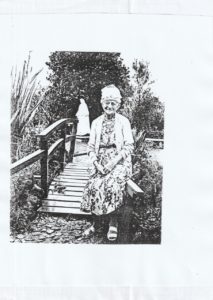
Miss Emilia Maude Nixon of Uxbridge Road, Howick, valued the recommendation of Lord Bledisloe, the former Governor-General of New Zealand, that we should follow the practice of open-air museums of Scandinavia by recording the history of Maori and pakeha in Aotearoa.
In 1935 she developed the “Garden of Memories” honouring Ngai Tai and settlers of Owairoa [later called Howick] “to promote understanding, harmony and goodwill between all people.”
Miss Nixon recognised the importance of The Treaty of Waitangi and that it was signed not far away by the Tamaki River.
She wrote to the Mayor of Auckland City, Sir John Allum, who on March 4, 1953, unveiled a plaque at Karaka Bay commemorating the 17 Maori who signed the Treaty there on March 4, 1840.
Another seven signed here on July 9, 1840. Most were Ngati Paoa or Hauraki but no Ngai Tai signed.
William Fairburn, assisted by Rev Henry Williams and Captain Joseph Nias witnessed the signatures. The July group of signatures were witnessed by Captain Rough, harbour master; George Clarke, Protector of Aborigines and Dr John Johnson, colonial surgeon.
Governor Hobson was exploring a site for a new capital of New Zealand from Okiato, later called Russell, in the Bay of Islands.
Some Ngati Whatua travelled to the Bay of Islands to sign the treaty and sell 3000 acres of Auckland for the capital which also gave them protection. All those who signed the Treaty received two blankets and some tobacco. Auckland, in 1840, had a few tents and shelters but few Maori lived there.
In Howick the son of missionary Archdeacon Maunsell , who had a copy of the Treaty, shared it with Miss Nixon which inspired her to recognise this important site.
In February 1840, more than 200 copies of the Treaty were printed but only nine exist today.
This was New Zealand’s founding document. Some Maori asked missionaries how the British in Australia treated Aborigines.
More than 500 Maori Chiefs signed the Treaty but there were major differences in the Te Reo Maori language and English versions. Successive settler-dominated Governments ignored the Treaty. Those who defended their lands, refusing to sell, were attacked by military and more than three million acres confiscated with no payment to Maori.
Miss Nixon recognised the grievances.
All of Howick was taken from Maori and not paid for. Eventually Maori grievances were recognised and in 1975 some compensation was made which continues today.
The Government sold this land to pay for the roads and immigration of Fencible soldier-settlers to Auckland. Some compensation has been made with the Ngai Tai Treaty of Waitangi Settlement.
Miss Nixon was a generous benefactor donating land for Nixon Centennial Park and for many community projects.
Miss Nixon died in 1962 and bequeathed her home with three-quarters of an acre as a public reserve, now the Emilia Maud Nixon Garden of Memories for the people of Howick.
Her garden and homestead are administered by Auckland Council and the public may also arrange to visit Te Raukohekohe Museum or enrol at the Te Whare Wananga O Owairoa, both located in the grounds.
Without her foresight we would not have such an understanding of the history of Howick.
- Alan La Roche, MBE
Howick Historian
alanlaroche@xtra.co.nz








